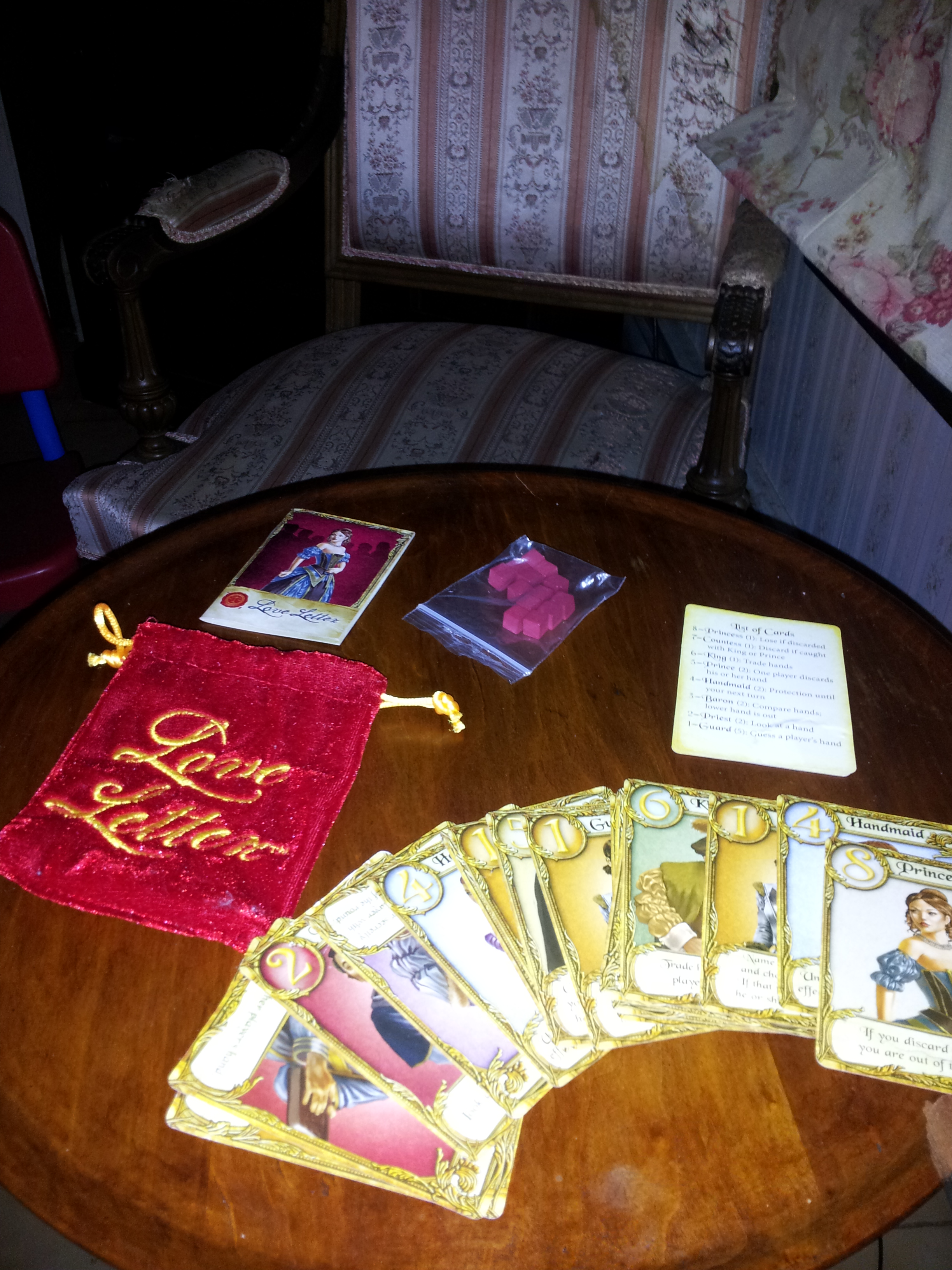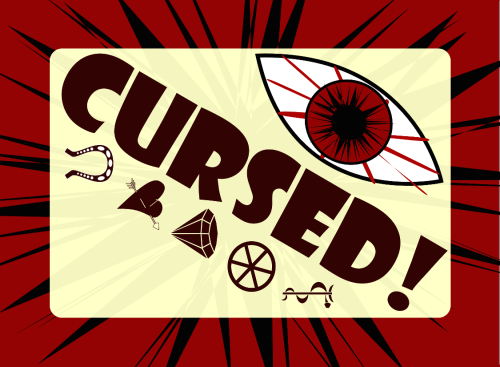Love Letter: A Fun, Quick Game for All Ages

Love Letter, designed by Seiji Kanai and published by AEG, was all the rage in 2012 and 2013, so of course, we ignored it until the summer of 2014. It turns out that our aversion to the hip and happening served us poorly in this case, and Love Letter is an enjoyable microgame.
Gameplay Summary
Draw one, play one. Do what it says on the card. If you run out of cards in the draw pile and still have people in the game, person with the highest card wins. It really is that simple.
The first wrinkle is the size of the deck: there are only sixteen cards and you burn one before starting each round. That means that counting cards is a viable strategy, even for novices (especially since every player gets a list of how many of each card there are, for reference), but there will always be an element of uncertainty due to the burned card.
The second wrinkle is the ‘do what it says on the card’ portion: since you only ever have two cards in your hand, the choices are limited and often lead to a no-win situation. The card instructions are well designed in this regard, often leading to tough choices and only occasionally leaving the player with no options but to do as he is told.
Like a trick-taking game, Love Letter goes a number of rounds before anyone is declared the winner, with the number of rounds required going down with the number of players. Since each round only takes a few minutes at most, it’s easy to pick up as a quick filler or settle into serious tournament mode, depending on your mood.
Theme
The game is set in AEG’s Tempest setting. Other than providing a back-story in the booklet and inspiring the art, the theme didn’t have any impact on us whatsoever. Perhaps if you’re more involved in the over-arching storyline, it would be a nice bonus, but with only a couple of minutes spent on each round, there isn’t really the time to get immersed in anything.
Final Thoughts
Love Letter has gotten a lot of play around here due to its simplicity and low time commitment. Those qualities aren’t sufficient for a stellar game, but they do lead to something that gets played over and over. In Love Letter’s case (as opposed to Candy Land, for instance) this repetition does not lead to boredom, but to time pleasantly spent with others. We’ve played it in groups of adults, adults with kids, and our kids enjoy playing with the game by themselves (though claiming that they play the game as designed would be a stretch).
In closing, we’re giving Love Letter a beer rating of a Merlot: easy to drink, not too complicated, can be enjoyed by many. We leave figuring out what it means that we’re using a wine in the beer rating as an exercise to the reader.

Thursday, October 30th 2014 at 8:50 pm |
[…] Full Review […]